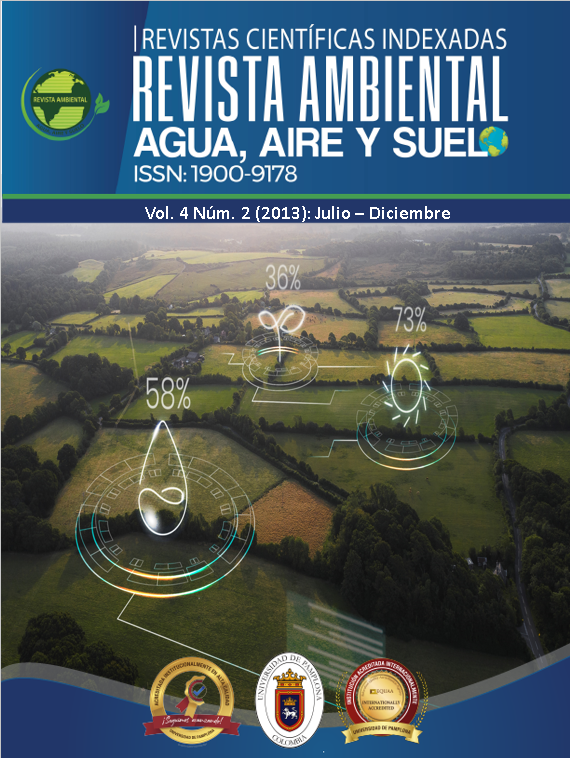Assessment of the water footprint of the city of Bogotá as a tool for water management in urban areas
DOI:
https://doi.org/10.24054/aaas.v4i2.2021Keywords:
water footprint, water resource management, BogotáAbstract
The study evaluated the water footprint of the city of Bogotá using the methodology developed by Arjen Hoekstra in order to identify the direct and indirect volumes of water that sustain life and development in the capital. The city of Bogotá contributes around 25% to the national GDP, using water for both the sustainability of its populations and its productive sectors. The transfer of water to the Bogotá city supply network, the inefficiency of wastewater treatment systems, changing regulations on water, institutional changes in water management, among others, make our relationship with water resources in the Colombian capital more complex.
The application of the water footprint methodology made it possible to evaluate the volumes of water used in the city as a result of all the dynamics mentioned above. As a general conclusion of the study, it was found that the city has made positive progress in terms of per capita consumption as a result of changes in the legislative, organizational, and cultural framework, while the effects of discharges into rivers continue to be a problem associated mainly with weaknesses in control systems and a lack of information on the
, organizational, and cultural framework, while the effects of discharges into rivers continue to be a problem that is basically associated with weaknesses in control systems, lack of information on the implementation of cleaner production mechanisms, the difficulty in complying with regulations, the credibility of the legislative regulatory framework on the issue of discharges, among others. Consequently, the issue of monitoring and controlling discharges becomes a priority from the perspective of sustainable water management.
Downloads
References
Comisión Económica para América Latina y el Caribe (CEPAL). (2004). Los servicios del agua potable y saneamiento en el umbral del siglo XXI. Naciones Unidas.
Congreso de Colombia. (1994, 11 de julio). Ley 142 de 1994: Régimen de los servicios públicos domiciliarios y otras disposiciones. Bogotá D.C., Colombia.
Empresa de Acueducto y Alcantarillado de Bogotá (EAAB). (2003). El agua en la historia de Bogotá, 1986 - 2003. Villegas Editores.
Empresa de Acueducto y Alcantarillado de Bogotá (EAAB). (2004). Plegable técnico de la PTAR Salitre. Recuperado el 28 de septiembre de 2012 de http://www.acueducto.com.co/wpsv61/wps/html/resources/PTAR/Plegable_tecnico.pdf
Gómez, L. (2013). El metro cúbico de agua potable es el más caro del país. El Tiempo. Recuperado el 14 de marzo de 2012 de http://m.eltiempo.com/colombia/enbogota-el-metro-cubico-de-agua-potable-es-el-mas-caro-del-pais/7740549/1/home
Fundación MAPFRE. (2011, diciembre). Huella hídrica y desarrollo sostenible. Recuperado el 22 de agosto de 2012 de http://www.huellahidrica.org/Reports/FundacionMapfre-2011-huellahidrica-y-desarrollo-sostenible.pdf
Metro Cuadrado. (2010). Ciudades y precios de finca raíz. Recuperado el 14 de marzo de 2013 de http://contenido.metrocuadrado.com/contenidom2/ciudyprec_m2/inforbog_m2/informacingeneralbogot/ARTICULO-WEBPL_DET_NOT_REDI_M2-2026901.html
Downloads
Published
Issue
Section
License
Copyright (c) 2022 REVISTA AMBIENTAL AGUA, AIRE Y SUELO

This work is licensed under a Creative Commons Attribution-NonCommercial 4.0 International License.










